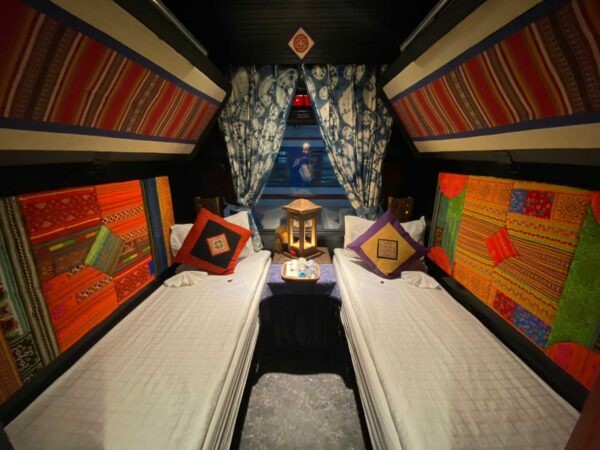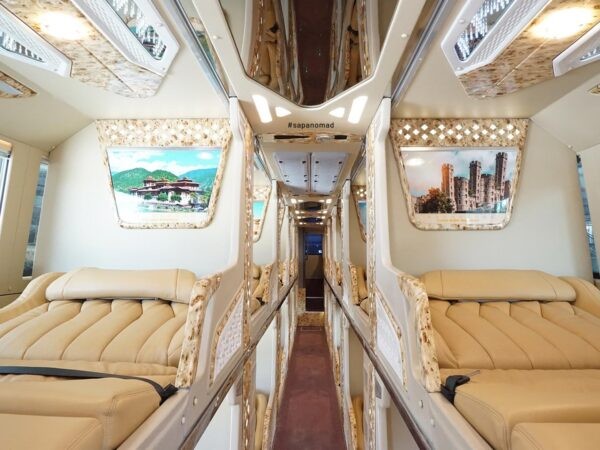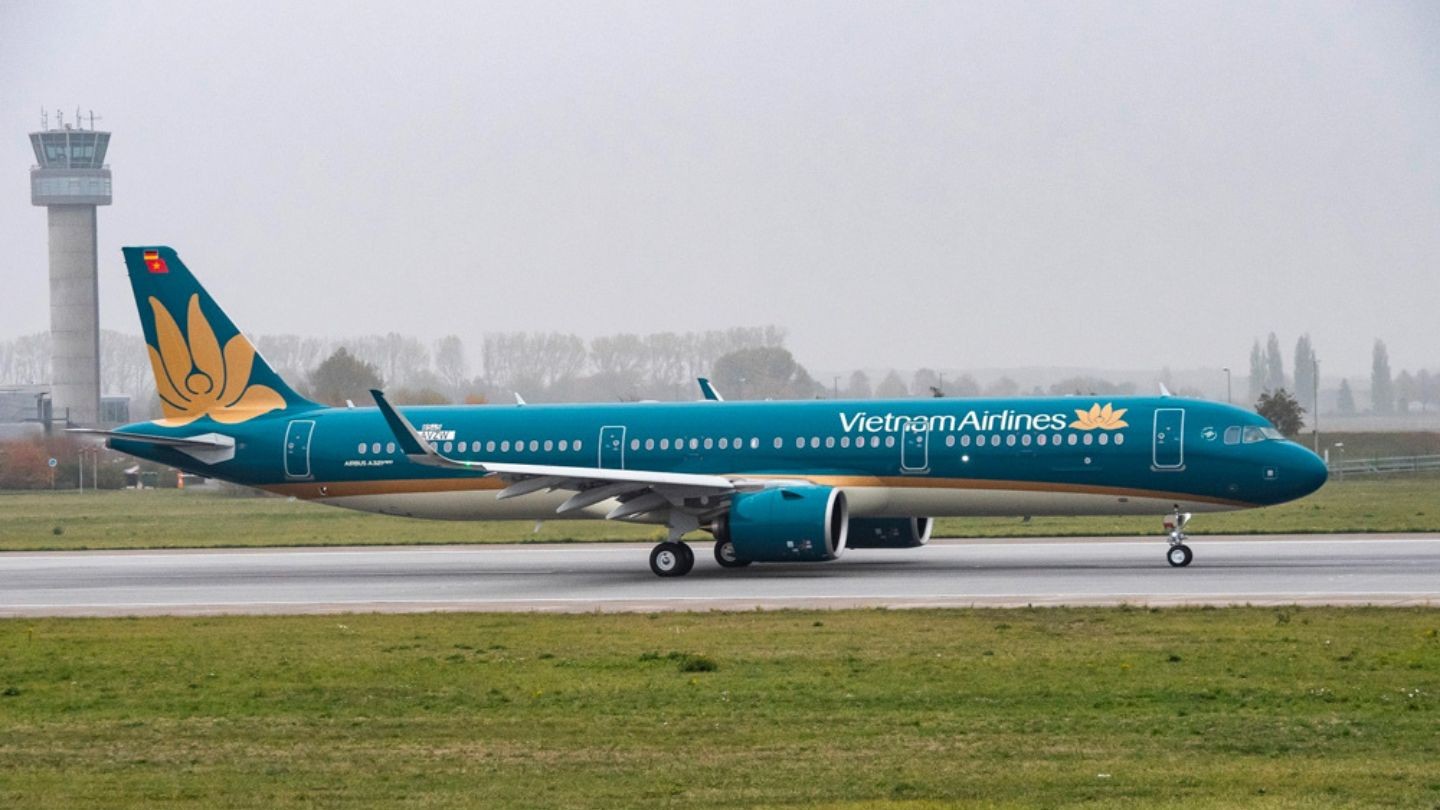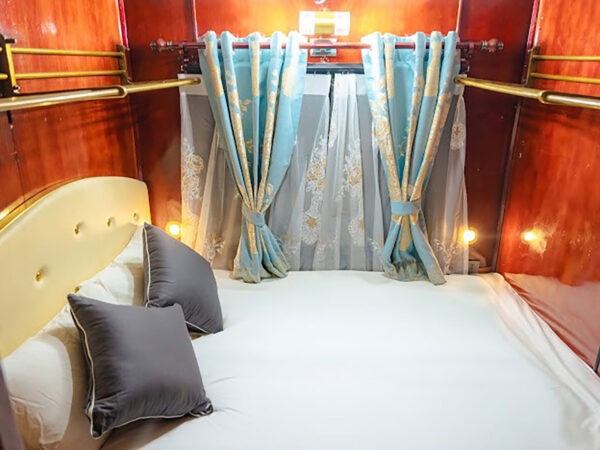Is Flying A Practical Option For Reaching Lao Cai/Sapa? Yes, flying to Hanoi and transferring to Lao Cai/Sapa offers a faster travel option for those with limited time. SIXT.VN offers seamless transfer services, making your journey to Sapa comfortable and convenient. Consider this option to optimize your travel plans and enjoy the beauty of Northern Vietnam, focusing on transfer options and efficient transportation.
Table of Contents
1. Understanding Your Travel Needs for Sapa
2. Train to Sapa: A Scenic Journey
3. Bus to Sapa: Direct and Affordable
4. Is Flying to Sapa a Viable Option?
5. Detailed Comparison: Train vs Bus vs Flight to Sapa
6. Combining Flight with Bus or Train: A Strategic Approach
7. Factors to Consider When Choosing Your Travel Method
8. Booking Your Journey with SIXT.VN
9. Essential Tips for a Smooth Trip to Sapa
10. Exploring Sapa: What to See and Do
11. Accommodation Options in Sapa
12. Preparing for Your Trip: Packing Essentials
13. Health and Safety Tips for Traveling to Sapa
14. Frequently Asked Questions (FAQs) about Traveling to Sapa
1. Understanding Your Travel Needs for Sapa
Before diving into the specifics of each travel option to Lao Cai/Sapa, it’s essential to understand your individual needs and preferences. This will help you make an informed decision that aligns with your travel style, budget, and time constraints. According to a survey by the Vietnam National Administration of Tourism in 2023, understanding your needs is crucial for a fulfilling travel experience. Are you someone who values scenic beauty and doesn’t mind a longer journey, or do you prioritize speed and efficiency above all else? Consider the following questions:
- What is your budget? Travel costs can vary significantly depending on the mode of transportation and level of comfort.
- How much time do you have? Some options are faster than others, which may be a deciding factor if your time is limited.
- What level of comfort do you require? Do you prefer a relaxing journey with comfortable seating or are you okay with a more basic travel experience?
- Are you prone to motion sickness? The winding mountain roads to Sapa can be challenging for some travelers.
- Do you prefer direct routes or are you comfortable with transfers? Some options involve transfers, which can add to the overall travel time and complexity.
- What type of experience are you looking for? Do you want to immerse yourself in the local culture or simply get to your destination as quickly as possible?
Answering these questions will provide a clearer picture of your travel needs and help you narrow down the best transportation option for your trip to Sapa.
2. Train to Sapa: A Scenic Journey
Traveling by train from Hanoi to Lao Cai (the gateway to Sapa) is a classic and romantic option, appealing to those who appreciate scenic views and a more relaxed pace. While not the fastest route, the train journey offers a unique glimpse into the Vietnamese countryside.
2.1 The Experience
The train journey typically takes around 8 hours, departing from Hanoi in the evening and arriving in Lao Cai early the next morning. Most trains offer sleeper cabins with comfortable beds, allowing you to rest and wake up refreshed. According to research from Vietnam Railways in 2022, sleeper trains are popular for long distances. As the train winds its way through the countryside, you’ll be treated to stunning views of rice paddies, mountains, and villages. Many travelers find the train journey to be a highlight of their trip.
2.2 Train Options
Several train companies operate on the Hanoi to Lao Cai route, offering varying levels of comfort and amenities. Some popular options include:
- Vietnam Railways: The state-owned railway company offers standard sleeper trains with basic amenities.
- Private Tourist Trains: Several private companies operate luxury trains with more comfortable cabins, better service, and additional amenities like dining cars and entertainment. Examples include Chapa Express, Sapaly Express, Laman Express, and VIC Sapa Train.
 Chapa Express Train: Interior view showing comfortable sleeping berths
Chapa Express Train: Interior view showing comfortable sleeping berths
2.3 Pros and Cons
Pros:
- Scenic views: Enjoy breathtaking landscapes along the way.
- Comfortable overnight travel: Sleeper cabins allow you to rest and arrive refreshed.
- Relaxing pace: A slower journey allows you to unwind and enjoy the scenery.
Cons:
- Longer travel time: The train journey is slower compared to buses or flights.
- Transfer required: Upon arrival in Lao Cai, you’ll need to take a bus or taxi to Sapa (approximately a 30-40 minute journey).
- Limited flexibility: Trains operate on fixed schedules.
2.4 Tips for Train Travel
- Book in advance: Especially during peak season, booking your train tickets in advance is highly recommended.
- Choose a reputable train company: Opt for private tourist trains for a more comfortable experience.
- Bring snacks and drinks: While some trains have dining cars, it’s always a good idea to bring your own refreshments.
- Pack earplugs and an eye mask: To ensure a good night’s sleep in the shared cabins.
- Be prepared for the transfer: Arrange your transportation from Lao Cai to Sapa in advance to avoid any hassle.
3. Bus to Sapa: Direct and Affordable
Taking a bus from Hanoi to Sapa is a popular choice for budget-conscious travelers who prefer a direct and relatively quick journey. Buses offer a more affordable alternative to trains and flights, with multiple operators providing daily services.
3.1 The Experience
The bus journey from Hanoi to Sapa typically takes around 5-6 hours, depending on traffic and road conditions. Many buses offer sleeper seats, allowing you to lie down and rest during the journey. According to the Ministry of Transport of Vietnam, buses are the preferred mode of transport for budget travelers. While the ride can be bumpy at times due to the winding mountain roads, the bus provides a convenient and direct way to reach Sapa.
3.2 Bus Options
Several bus companies operate on the Hanoi to Sapa route, offering a range of options to suit different budgets and preferences. Some popular companies include:
- Sao Viet: Known for its comfortable sleeper buses and reliable service.
- H.K Open Tour: Offers VIP cabin buses with more privacy and amenities.
- Kadham Bus: Provides sleeper buses with comfortable berths and onboard entertainment.
- G8 Sapa Open Tour: Offers a range of bus options, including sleeper and seating buses.
 Sao Viet Bus: VIP Cabin Bus with individual sleeping compartments
Sao Viet Bus: VIP Cabin Bus with individual sleeping compartments
3.3 Pros and Cons
Pros:
- Direct route: Most buses travel directly from Hanoi to Sapa without transfers.
- Budget-friendly: Bus tickets are generally more affordable than train or flight tickets.
- Flexible scheduling: Multiple departure times throughout the day.
Cons:
- Road conditions: Winding mountain roads can be challenging for those prone to motion sickness.
- Less personal space: Sleeper buses offer less privacy compared to train cabins.
- Comfort level: May be less comfortable than trains or private vehicles.
3.4 Tips for Bus Travel
- Book in advance: Especially during peak season, booking your bus tickets in advance is recommended.
- Choose a reputable bus company: Opt for companies with good reviews and comfortable buses.
- Bring snacks and drinks: While some buses provide refreshments, it’s always a good idea to bring your own.
- Pack a travel pillow and blanket: For added comfort during the journey.
- Be prepared for motion sickness: If you’re prone to motion sickness, take medication beforehand.
4. Is Flying to Sapa a Viable Option?
While there is no direct airport in Sapa, flying to Hanoi and then transferring to Sapa by bus or train can be a practical option, especially for travelers coming from distant locations or those with limited time. According to a 2024 report by the Civil Aviation Authority of Vietnam, flying to Hanoi can significantly reduce travel time compared to overland travel.
4.1 Understanding the Route
The nearest airport to Sapa is Noi Bai International Airport (HAN) in Hanoi. From Hanoi, you can then take a bus or train to Lao Cai/Sapa. This combination of air and land travel can be an efficient way to reach Sapa, particularly if you’re traveling from outside of Vietnam.
4.2 Pros and Cons of Flying to Hanoi and Transferring
Pros:
- Fastest travel time to Hanoi: Ideal for travelers coming from far away.
- Saves time for exploring: Minimizes travel time and maximizes your experience in Sapa.
- Comfortable flight: Enjoy a comfortable flight to Hanoi.
Cons:
- No direct flight to Sapa: Requires a transfer to a bus or train.
- Additional transfer costs: Bus or train fare increases the overall travel budget.
- Inconvenient transfers: Can be challenging for those with limited travel experience.
4.3 When Flying Makes Sense
- International travelers: If you’re flying from outside of Vietnam, flying to Hanoi is the most efficient way to start your journey to Sapa.
- Limited time: If you have limited time and want to maximize your time in Sapa, flying to Hanoi and transferring can save you valuable hours.
- Comfort preference: If you prefer a comfortable flight over a long bus or train journey, this option may be suitable for you.
 Noi Bai International Airport: The main gateway for air travel to Hanoi and Sapa
Noi Bai International Airport: The main gateway for air travel to Hanoi and Sapa
5. Detailed Comparison: Train vs Bus vs Flight to Sapa
To help you make an informed decision, here’s a detailed comparison of the three travel options:
| Feature | Train | Bus | Flight + Transfer |
|---|---|---|---|
| Approximate Time | 8 hours + transfer | 5-6 hours | Varies (flight + 6 hours transfer) |
| Cost | Moderate (29-55 USD) | Budget-Friendly (20-25 USD) | Higher (flight ticket + bus/train fare) |
| Comfort Level | High (sleeper beds available) | Moderate (shared seating, sleeper options) | High (quickest to Hanoi) |
| Best For | Scenic views, overnight travel | Direct route, budget-conscious travelers | Time-constrained travelers, long-distance travelers |
| Scenic Views | Excellent | Limited | N/A |
| Direct Route | No (requires transfer from Lao Cai) | Yes | No (requires transfer in Hanoi) |
| Flexibility | Limited (fixed schedules) | High (multiple departure times) | Moderate (flight schedules + transfer times) |
| Motion Sickness | Less likely | More likely (winding roads) | Less likely |
6. Combining Flight with Bus or Train: A Strategic Approach
For those opting to fly to Hanoi and then transfer to Sapa, the choice between bus and train for the second leg of the journey depends on your priorities:
6.1 Flight + Bus
- Pros: More direct, often slightly faster than the train option.
- Cons: Can be less comfortable due to the winding roads, potential for motion sickness.
6.2 Flight + Train
- Pros: More comfortable, scenic journey from Lao Cai to Sapa.
- Cons: Requires a transfer from Hanoi airport to the train station, can be slightly slower overall.
6.3 Transfer Options from Hanoi Airport
- Private car: The most convenient but also the most expensive option. SIXT.VN offers reliable and comfortable private car services.
Address: 260 Cau Giay, Hanoi, Vietnam.
Hotline/Whatsapp: +84 986 244 358
Website: SIXT.VN - Taxi: Readily available at the airport, but negotiate the fare beforehand.
- Airport bus: A more affordable option, but can be crowded and less convenient.
- Grab: A ride-hailing service that offers a convenient and often cheaper alternative to taxis.
7. Factors to Consider When Choosing Your Travel Method
When making your decision, consider the following factors:
- Budget: How much are you willing to spend on transportation?
- Time: How much time do you have for your trip?
- Comfort: What level of comfort do you require during the journey?
- Scenery: Do you value scenic views along the way?
- Directness: Do you prefer a direct route or are you comfortable with transfers?
- Flexibility: Do you need a flexible schedule or are you okay with fixed departure times?
- Motion Sickness: Are you prone to motion sickness?
8. Booking Your Journey with SIXT.VN
SIXT.VN offers a range of services to help you plan and book your journey to Sapa, including:
- Airport Transfers: Convenient and reliable airport transfer services from Noi Bai International Airport to your hotel in Hanoi or directly to Sapa.
- Hotel Bookings: A wide selection of hotels in Hanoi and Sapa to suit all budgets and preferences.
- Tour Packages: Carefully curated tour packages that combine transportation, accommodation, and activities in Sapa.
- Bus and Train Tickets: Assistance with booking bus and train tickets to Sapa.
SIXT.VN aims to make your travel experience as smooth and hassle-free as possible.
 SIXT.VN: Your reliable partner for seamless travel to Sapa
SIXT.VN: Your reliable partner for seamless travel to Sapa
9. Essential Tips for a Smooth Trip to Sapa
- Book in advance: Especially during peak season, book your transportation and accommodation in advance.
- Pack appropriately: Sapa can be cool and misty, so pack layers of clothing, including a waterproof jacket.
- Bring comfortable shoes: You’ll be doing a lot of walking, so comfortable shoes are essential.
- Stay hydrated: Drink plenty of water, especially when trekking.
- Respect local customs: Dress modestly when visiting temples and villages.
- Learn a few basic Vietnamese phrases: This will enhance your interactions with locals.
- Bargain respectfully: Bargaining is common in markets, but do it respectfully.
- Be aware of scams: Be cautious of scams and touts, especially in tourist areas.
- Get travel insurance: Ensure you have adequate travel insurance to cover any unforeseen circumstances.
10. Exploring Sapa: What to See and Do
Sapa offers a wealth of attractions and activities for travelers:
- Trekking: Explore the stunning rice terraces and visit ethnic minority villages.
- Fansipan Peak: Conquer the highest peak in Indochina by cable car or challenging trek.
- Cat Cat Village: Discover the culture and traditions of the Black H’mong people.
- Muong Hoa Valley: Admire the ancient rock carvings and breathtaking scenery.
- Sapa Market: Immerse yourself in the local culture and shop for souvenirs.
- Love Waterfall: Hike to this beautiful waterfall and enjoy the surrounding nature.
- Ham Rong Mountain: Enjoy panoramic views of Sapa town and the surrounding mountains.
11. Accommodation Options in Sapa
Sapa offers a range of accommodation options to suit all budgets and preferences:
- Luxury Hotels: Enjoy world-class amenities and stunning views at hotels like Hotel de la Coupole – MGallery and Silk Path Grand Resort & Spa Sapa.
- Mid-Range Hotels: Comfortable and well-equipped hotels like Sapa Clay House – Mountain Retreat and Chau Long Sapa Hotel.
- Budget Hostels: Affordable and sociable hostels for backpackers and budget travelers.
- Homestays: Experience the local culture by staying in a traditional homestay in a village.
12. Preparing for Your Trip: Packing Essentials
- Layers of clothing: Sapa can be cool and misty, so pack layers of clothing.
- Waterproof jacket: Essential for protection against rain and mist.
- Comfortable shoes: You’ll be doing a lot of walking, so comfortable shoes are a must.
- Backpack: For carrying essentials during treks and day trips.
- Insect repellent: To protect against mosquitoes and other insects.
- Sunscreen: Even on cloudy days, the sun can be strong at high altitudes.
- Hat and sunglasses: For protection from the sun.
- First-aid kit: Include any necessary medications and basic first-aid supplies.
- Adapter: If you’re traveling from outside of Vietnam, you may need an adapter for your electronic devices.
13. Health and Safety Tips for Traveling to Sapa
- Consult your doctor: Before traveling, consult your doctor about any necessary vaccinations or medications.
- Drink bottled water: Avoid drinking tap water, which may not be safe.
- Eat at reputable restaurants: To avoid food poisoning.
- Be aware of altitude sickness: If you’re trekking at high altitudes, be aware of the symptoms of altitude sickness and take precautions.
- Protect yourself from the sun: Wear sunscreen, a hat, and sunglasses.
- Be cautious of traffic: Traffic in Vietnam can be chaotic, so be careful when crossing the road.
- Keep your belongings safe: Be aware of pickpockets and keep your belongings safe, especially in crowded areas.
- Trust your instincts: If something doesn’t feel right, trust your instincts and remove yourself from the situation.
14. Frequently Asked Questions (FAQs) about Traveling to Sapa
14.1 Is Sapa worth visiting?
Absolutely! Sapa is renowned for its breathtaking landscapes, vibrant culture, and unique trekking experiences, making it a must-visit destination in Northern Vietnam.
14.2 What is the best time to visit Sapa?
September to November and March to May are ideal, offering pleasant weather and stunning views of the rice terraces.
14.3 How many days should I spend in Sapa?
A minimum of 3 days is recommended to fully experience Sapa’s attractions, including trekking, village visits, and exploring local markets.
14.4 What should I pack for Sapa?
Pack layers of clothing, comfortable hiking shoes, a waterproof jacket, insect repellent, and sunscreen.
14.5 Do I need a visa to visit Sapa?
Visa requirements depend on your nationality. Check the latest regulations from the Vietnamese embassy or consulate in your country.
14.6 What are the must-try foods in Sapa?
Don’t miss local specialties like Thang Co (horse meat stew), grilled dishes, and various ethnic minority cuisines.
14.7 Is it safe to trek in Sapa without a guide?
While some trails are easy to navigate, hiring a local guide is recommended for safety and to learn more about the local culture and environment.
14.8 How can I get from Hanoi to Sapa?
Options include train, bus, or a combination of flight to Hanoi and then bus or train to Sapa.
14.9 What ethnic groups live in Sapa?
Sapa is home to several ethnic minority groups, including the Hmong, Dao, Tay, and Giay.
14.10 What activities can I do in Sapa besides trekking?
Explore Cat Cat Village, visit Fansipan Peak, explore local markets, and experience traditional homestays.



